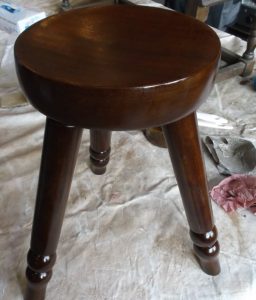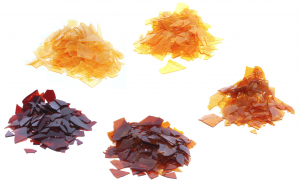 In the last year or so the cost of finish has skyrocketed. I work a lot with Mahogany and Cherry woods in my projects. My go to finish was Danish Oil, Teak Oil, and Odes. Many of those gotten from the local box store have went up in cost substantially. I use a lot of river recovered wood where the sap is no longer present and it is really dry – beautiful stuff but really dry and soaks up finish.
In the last year or so the cost of finish has skyrocketed. I work a lot with Mahogany and Cherry woods in my projects. My go to finish was Danish Oil, Teak Oil, and Odes. Many of those gotten from the local box store have went up in cost substantially. I use a lot of river recovered wood where the sap is no longer present and it is really dry – beautiful stuff but really dry and soaks up finish.I made several charcuterie boards and soaked in mineral oil and waxed. Weeks later they wood look dry again Some the oil would run thru them. So I looked at some kind of pre-treatment like sanding sealer to solve this problem. Come to find out my local source of sanding sealer ended up being shellac.
So I started researching how to best use shellac and came across some luthiers and other instrument builders that were using it with a technique called french polish. So I started playing with it – and was amazed at how nice of a finish it turned out.
VIDEO COMING SOON
French polishing was developed as a finishing technique in the early 19th century. In the Victorian era, French polishing was commonly used on mahogany and other expensive timbers. It was considered the best finish for fine furniture and string instruments such as pianos and guitars.
French polishing consists of applying many thin coats of shellac dissolved in denatured alcohol using a rubbing pad lubricated with one of a variety of oils. The rubbing pad is made of absorbent cotton or wool cloth wadding inside of a piece of fabric (usually soft cotton cloth) and is commonly referred to as a fad, also called a rubber.
It’s flexible, so resists cracking, scratches, and wear—a definite advantage if you drop your keys onto a shellacked table, for example. Shellac also dries quickly and is nontoxic. It won’t yellow over time, as varnish will, and it’s fairly easy to patch up your French-polished piece without leaving obvious signs of repair. While shellac is naturally amber to orange, you’ll also find bleached shellac that’s useful over light-colored wood like maple.
On the downside, however, shellac burns if exposed to high heat—such as a hot plate set down without a trivet. It also develops white rings or patches if subject to high humidity or liquids, so it’s risky to French polish a coffee table or any piece of furniture that might gather drips or condensation. Finally, shellac is also damaged by alcohol, so this isn’t the best choice for counters or furniture in your home bar. Obviously not good for coasters.
 The French Polish technique is an excellent method to accent exotic wood grain. The finish is softer than modern varnishes and lacquers, and is particularly sensitive to spills of water or alcohol, which may produce white cloudy marks, as does heat damage. On the other hand, French Polish is simpler to repair, as opposed to traditional & modern varnish finishes.
The French Polish technique is an excellent method to accent exotic wood grain. The finish is softer than modern varnishes and lacquers, and is particularly sensitive to spills of water or alcohol, which may produce white cloudy marks, as does heat damage. On the other hand, French Polish is simpler to repair, as opposed to traditional & modern varnish finishes.PROS
- Cost Savings
- You can thin product for different results
- Control application
- Easier to repair
- You can apply other finishes over this one
- Solves my problem with really dry wood
CONS
- Alcohol will damage finish
- Not as protective as some finishes
I love the look of shellac and how it brings out the beauty of the wood. It is not the catch-all finish for everything for the reasons we talked about, but it has solved my issue